Geisterzug: The alternative Carnival in Cologne
After exploring the Roman origins of the Cologne Carnival, we will now take a look at the alternative carnival event in Cologne called “Geisterzug” (lit. “Ghost Parade”). It is actually a more recent addition to the Cologne Carnival tradition, starting in 1991, and can be seen as a protest against the commercialization of the today’s Cologne Carnival.
The Geisterzug 2024. Note the Anti-AfD sticker on this participant’s Halloween-esque mask, serving as a prime example of the blend between carnival festivity and political statement that the Geisterzug is renowned for.
What is the Geisterzug?
Nowadays, the Geisterzug is held on the Saturday evening before Women’s Carnival (German: Weiberfastnacht). Unlike the traditional carnival parades in Cologne, the Geisterzug is known for its more somber and mysterious ambiance. Participants dress up in ghost costumes or other imaginative, often dark, attire. The parade has a more spontaneous and less commercial character compared to the larger carnival processions. This attracts a diverse audience in search of an alternative, creative form of celebration, independent of traditional carnival associations. The parade is also often accompanied by a political message.
Impressions from the Geisterzug 2024.
Origins
The origins of the Geisterzug trace back to the 1990s. It initially started as a protest against the rescheduling of the traditional Rose Monday parade due to the Gulf War. At that time, the Cologne police had other additional security tasks to fulfill and were therefore unable to guarantee the safety of the participants. For that reason, the Cologne Peace Plenum (Kölner Friedensplenum) called for an anti-Gulf War demonstration on Rose Monday, which followed the usual Rose Monday procession route. From this demonstration, a mixture of both political demonstrators and carnival participants, emerged the desire to establish an alternative to the traditional carnival parades — thus, the Geisterzug was born.
The organizers claimꜛ that the parade has even older roots, dating back to the Middle Ages. It was believed that medieval folks sought to expel the ghosts hiding behind the hearth all winter to rejuvenate the earth and warm the sun. These spirits were banished with much noise, at an appropriate time: in the darkness of the night. Concurrently, servants, maids, and journeymen were typically unemployed from November until spring, and social unrest occasionally occurred. The bourgeois carnival reform of 1823 managed to tame the wild nocturnal festival, introducing daytime parades. The common people were granted a “Ghost Parade” in the dark on Saturday evenings, which, after the suppression of the 1848 revolutions, was repurposed for the recruitment parade of the “Funken” (spark guards). The 1991 re-introduction of the Geisterzug considers itself a return to the former medieval tradition.
“Rules”
While being a liberal and open event, there are some pieces of advices and “rules” that define the actual spirit of the parade:
- The parade aims to be both carnivalesque and political: anyone can use this parade as a demonstration for or against whatever they believe needs to be promoted or opposed. Those who just want to celebrate are not excluded.
- Everyone is welcome to join, even without costumes. People can join the parade at any time and leave it at any time. Spectators are also welcome to join the parade.
- Unlike traditional Carnival parades, there are no sweets (German: “Kamelle”) or small bouquets thrown (“Strüßjer”).
- The route changes every year. While traditional parades always follow the same path, the Geisterzug is also considered a guided tour of historically significant places and buildings in and around Cologne. Wherever possible, there is a connection between the current theme and the route.
- Making live-music without electricity, such as performances of Samba groups and pot lid players, is encouraged. Singing the lyrics of Carnival and political songs is also welcome.

 Route of the Geisterzug 2015 (left) and 2024 (right). Source: geisterzug.deꜛ
Route of the Geisterzug 2015 (left) and 2024 (right). Source: geisterzug.deꜛ
Financing
The event is organized by an association founded specifically for this purpose, the “Ähzebär un Ko e.V.”, named after a traditional carnival mask (“Erbsenbär”, lit.: pea bear). This association is financed by donations and bears the costs caused by barriers, street cleaning, etc. Here is a listꜛ of all parades since 1992. Individual donations are also possibleꜛ.
Conclusion
The Geisterzug has become an integral part of Cologne’s carnival season, though it does not consider itself a carnival event but rather as a general protest march, representing a unique fusion of protest culture and carnival tradition. It’s a great opportunity to experience a revived medieval tradition, with a modern twist. And, in my opinion, it’s also a great way to experience the city of Cologne in a different light, as the parade route changes every year, celebrating with the locals in a more intimate and non-commercial setting.
Past parades
- Geisterzug 2025ꜛ:
- from: Eigelstein to Apostelnkloster
- motto: “We need money for culture, so we are stubborn” (“Mer bruche Jeld för Kultur, do sin mer Jeister stur”)
- Geisterzug 2024ꜛ:
- from: Buchheim/Wichheimer Straße to Mülheim/Wiener Platz
- motto: “We cling to life - spirits for today and tomorrow” (“Mer klävve am Lävve – Jeister för hück un murje”)
- Geisterzug 2023ꜛ:
- from: Riehl/Stammheimer Str. to Nippes/Wilhelmplatz
- motto: “Carnival is for everyone - halal, kosher and liberal - we celebrate politically” (“Fastelovend es för all – halal, koscher un liberal – mir fiere politisch”)
- Geisterzug 2022ꜛ:
- cancelled due to the COVID-19 pandemic
- Geisterzug 2021ꜛ:
- cancelled due to the COVID-19 pandemic
- Geisterzug 2020ꜛ:
- from: Altstadt-Nord/Heumarkt to Friesenviertel/Friesenwall
- motto: “Spirits for the future” (“Jeister för Zokunf”)
- Geisterzug 2019ꜛ:
- from: Aachener Weiher to Klettenbeg/Neuenhöfer Allee
- motto: “Cologne is collapsing - more space for bicycles” (“Kölle kritt dr Kollaps – mieh Platz för Rädcher”)
- Geisterzug 2018ꜛ:
- from: Buchforst to Kalk
- motto: “Popping, not beating - on the road for peace” (“Poppe, net Kloppe – mer trecke för dr Fridde”)
- Geisterzug 2017ꜛ:
- Südstadt, from Alteburger Str. to Bonner Str.
- motto: “In honor of the Roman fleet: Around the Alteburg” (“Dr römischen Flott ze Ihre: Öm de Alteburch eröm”)
- Geisterzug 2016ꜛ:
- from: Eigelsteinviertel/Thürmchenswall to Südstadt/Chlodwigplatz
- motto: “In honor of Agrippina and the Roman fleet: Up the Rhine” (“Däm Agrippina un dr römischen Flott ze Ihre: Dä Rhing erop”)
- Geisterzug 2015ꜛ:
- along the former Roman wall around CCAA (Roman Cologne)
- motto: “In honor of Agrippina: Along the Roman wall” (“Däm Agrippina ze Ihre: Lans dr römische Muur”)
- Geisterzug 2014ꜛ:
- from: Nippes/Nesselrodestr. to Andreasviertel/Neumarktviertel/Komödienstr.
- motto: “In honor of Agrippina: Along the road from Xanten to the Pfaffenpforte” (“The Agrippina to yours: Along the river from Xanten to Paffepooz”)
- Geisterzug 2013ꜛ:
- from: Ehrenfeld/Venloer Str. to Neumarktviertel/Getrudenplätzchen
- motto: “In honor of Agrippina: Along the road from Venlo to the Old Gate of Honor” (“Däm Agrippina ze Ihre: Lans dr Stroß vun Venlo noh dr Ahle Ihrepooz”)
- Geisterzug 2012:
- canceled due to high security requirements after the accident at the Love Parade 2010.
- Geisterzug 2011ꜛ:
- from: Mauritiusviertel/Siebengebirgsallee to Klettenberg/Leonhard-Tietz-Str.
- motto: “In honor of Agrippina: Along the road from Zülpich to the thermal baths” (“Däm Agrippina ze Ihre: Lans dr Stroß vun Zülpich noh de Therme”)
- Geisterzug 2010ꜛ:
- from: Südstadt/An der Alteburger Mühle to Gereonsviertel/Kapitolviertel/Waidmarkt
- motto: “In honor of Agrippina: From the naval fort to the High Gate” (“Däm Agrippina ze Ihre: Vum Flottekastell noh dr Huhpooz”)
- Geisterzug 2009ꜛ:
- Rodenkirchen
- motto: “The adult pea bear, the middle class and other poor church mice” (“Dr volljöhrije Ähzebär, die Meddelschich un ander ärm Kirchemüs”)
- Geisterzug 2008ꜛ:
- from: Mülheim/Wiener Platz to Kalk
- motto: “Mother Earth has a hot flush” (“Mutter Ääd hät Hetzewallung”)
- Geisterzug 2007ꜛ:
- from: Neuehrenfeld/Subbelrather Str. to Nippes/Niehler Kirchweg
- motto: “My old lady (partner) is from Cologne” (“Ming Ahl es Kölsche”)
- Geisterzug 2006ꜛ:
- from: Roncalliplatz through Altstadt to Neumarktsviertel/Hans-Hartmann-Platz
- motto: “Off the cuff. Ghosts at the end?” (“*Us dr Lamäng. Jeister am Engk? *”)
- Geisterzug 2005ꜛ:
- from: Neumarktsviertel/Gertrudenstr. to Agnesviertel/Lentstr.
- motto: “Icy times” (“Iesije Zigge”)
- Geisterzug 2004ꜛ:
- Ehrenfeld
- motto: “Reforms and social cuts hurt, but no one is forcing us to our knees!” (“Reforme un Sozialavbau dun wieh, ävver uns zwingk keiner in de Knie!”)
- Geisterzug 2003ꜛ:
- from: Kwartier Latäng to Lindenthal/Sülz/Palanter Str.
- motto: “Cologne corrupt!” (“Colonia Corrupta!?”)
- Geisterzug 2002ꜛ:
- from: Longerich over Heimersdorf to Chorweiler
- motto: “Let’s melt” (“Loß mer schmelze”)
- Geisterzug 2001ꜛ:
- from: Südstadt/Loreleystr. to Neumarktviertel/Heumarkt
- motto: “Everyone loves carnival and theater, hey Cologne - give us a warm rain” (“Karneval un Thiater hammer all jän, he Kölle – jev uns ene wärme Rän”)
- Geisterzug 2000ꜛ:
- from: Mülheim/Wiener Platz to Kalk/Sünner Brauer
- motto: “Black, naked, left-wing, yellow, crazy Jecken are crazy on the road” (“Schwatz, bläck, links, jäl, schräje Jecke trecke schäl”)
- Geisterzug 1999ꜛ:
- from: Cologne to Bonn via Köln-Düsseldorfer shipping line
- motto: “Klüngel, Stapel, …, quickly slipped by” (“Klüngel, Stapel, …, flöck derlans jeflutsch”)
- Geisterzug 1998ꜛ:
- from: Ehrenfeld/Lenauplatz to Neumarkviertel/Ehrenstraße
- motto: “The broom sweeps in Cologne - but edelweiss and the Wailing Wall are not forgotten” (“In Kölle fäch d’r Bessem – doch Edelwieß un Klagemuur sin nit verjesse”)
- Geisterzug 1997ꜛ:
- from: Nippes/Niehler Kirchweg to Neustadt-Nord/Ebertplatz
- motto: “African dreams” (“Afrikanische Träume”)
- Geisterzug 1996ꜛ:
- from: Neumarkviertel/Schildergasse to Südtsadt/Chlodwigplatz
- motto: “Once the world becomes foolish, it soon becomes sensible” (“Wenn die Welt erst närrisch wird, wird sie bald vernünftig”)
- Geisterzug 1995ꜛ:
- from: Sülz/Luxemburger Straße to Eigelstein/Gereonsviertel/Ursulakloster
- motto: “Beggars, rogues, the sickly and other decent people” (“Beddelsäck, Spetzbove, Malötzije un andere anständije Lück”)
- Geisterzug 1994ꜛ:
- Deutz, from Ottoplatz to Deutzer Freiheit
- motto: “Witches’ Sabbath” (“Hexensabbat”)
- Geisterzug 1993ꜛ:
- from: Kapitelviertel/Gereonsviertel/Waidmarkt to Eigelstein
- motto: “On the road with the devil” (“Me’m Düvel op Jöck”)
- Geisterzug 1992ꜛ:
- from: Altstadt Nord/Mariengartengasse to Neusser Straße/Eberplatz
- motto: “The pea bear is coming” (“D’r Ähzebär kütt”)
- Geisterzug 1991ꜛ:
- followed the route of the traditional Rose Monday parade in Cologne
- motto: “Sweets instead of bombs” (“Kamelle statt Bomben”)
References and further reading
- geisterzug.deꜛ
- Wikipedia article on Geisterzugꜛ

















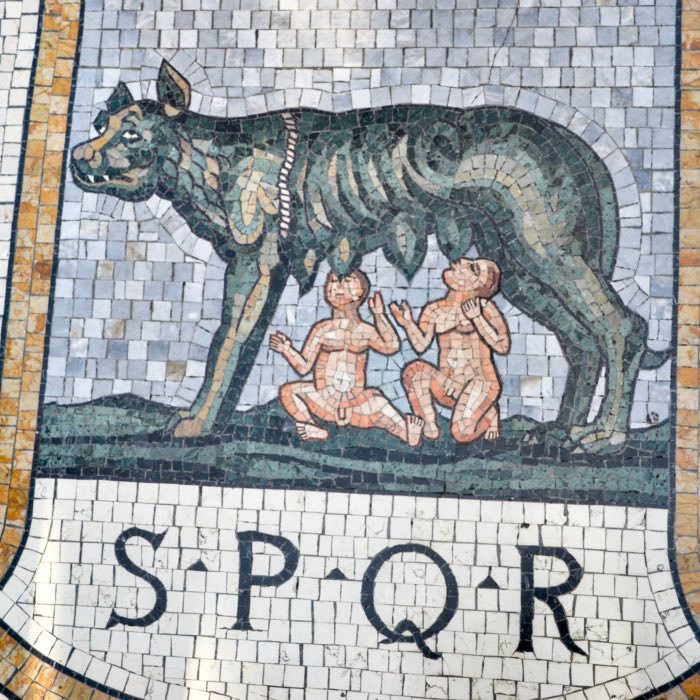
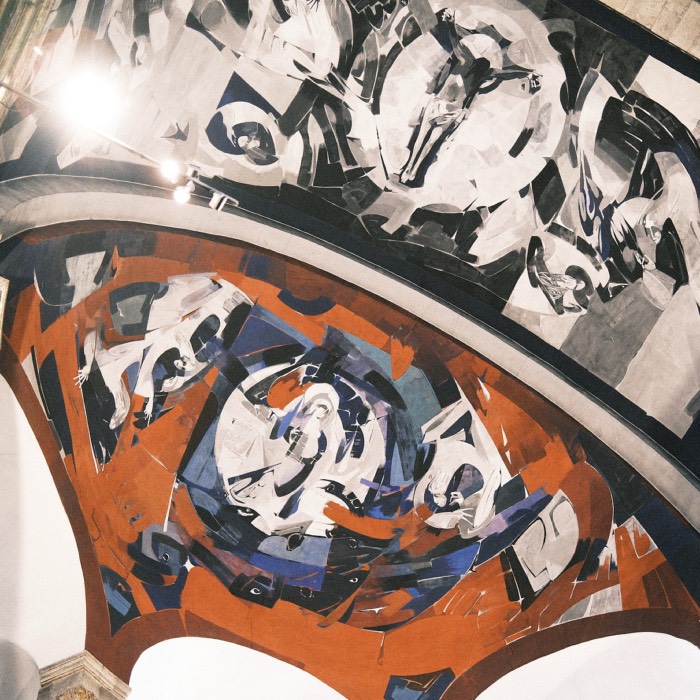
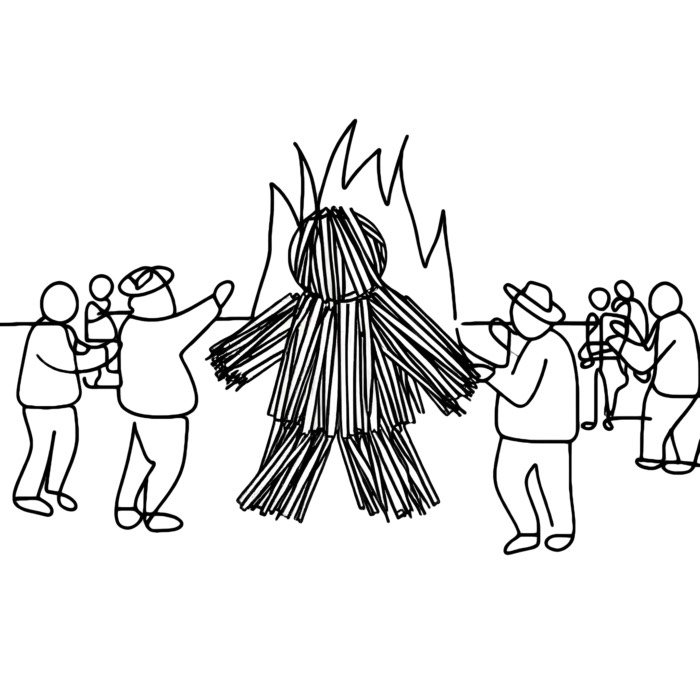

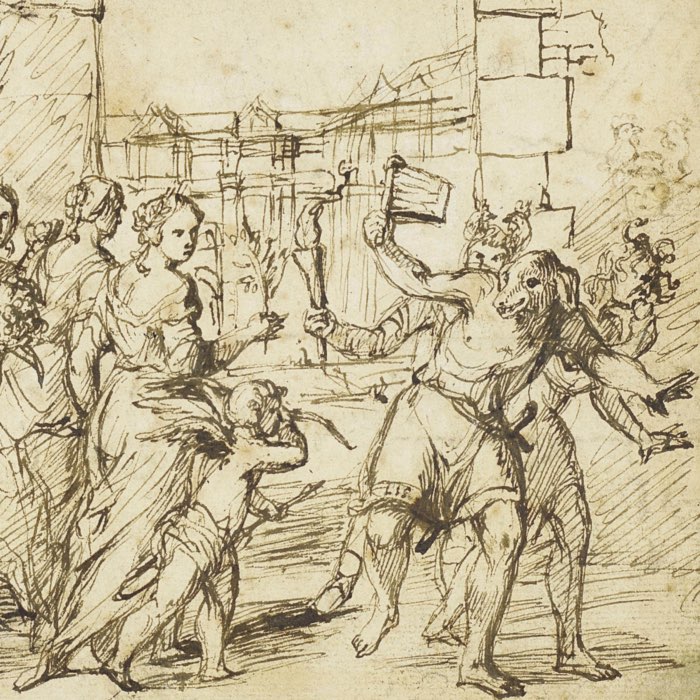

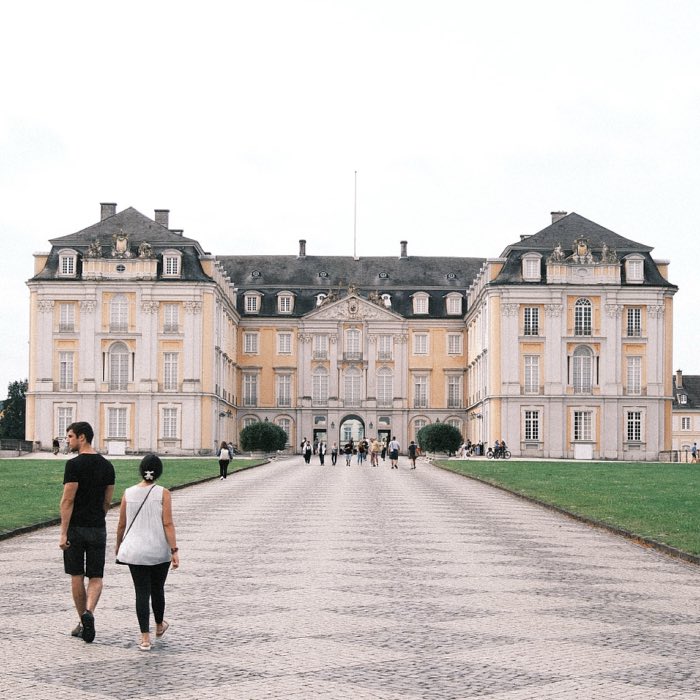
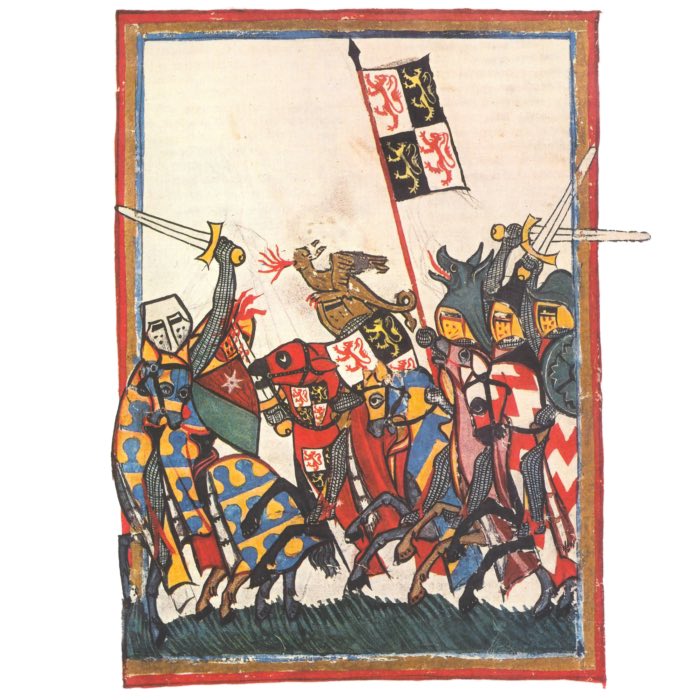
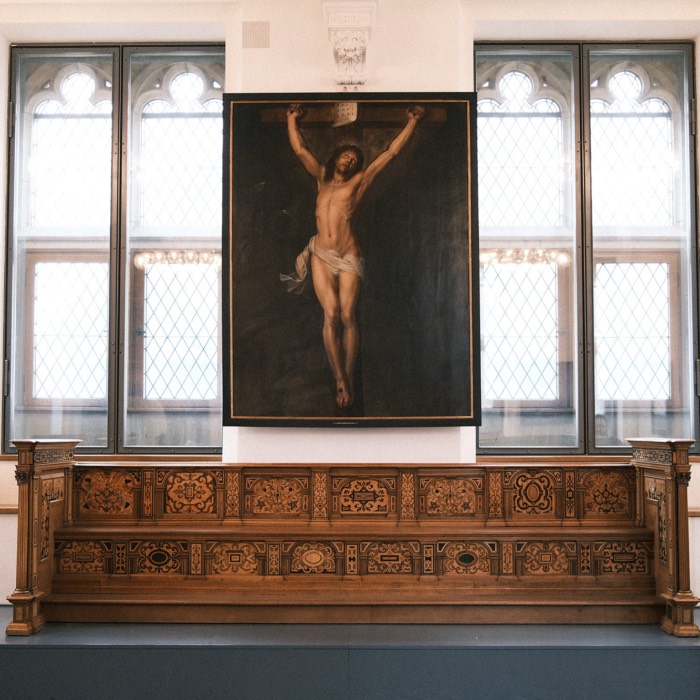
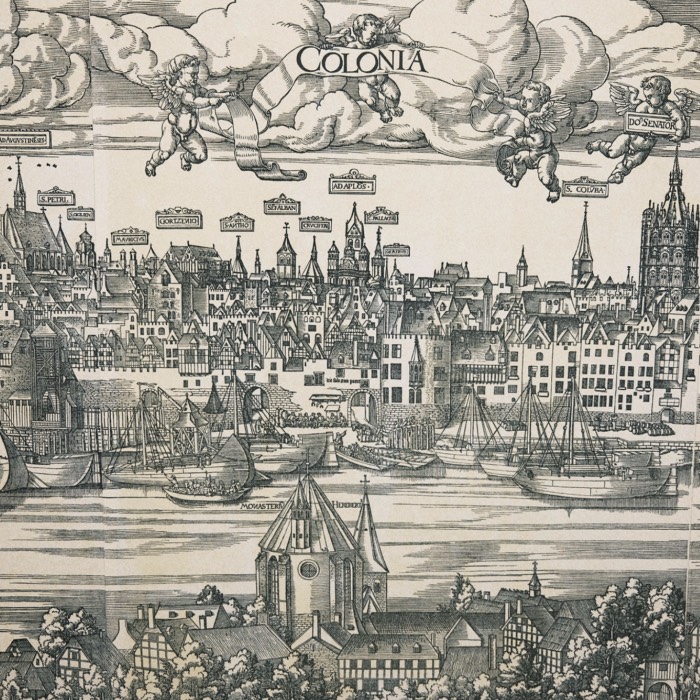

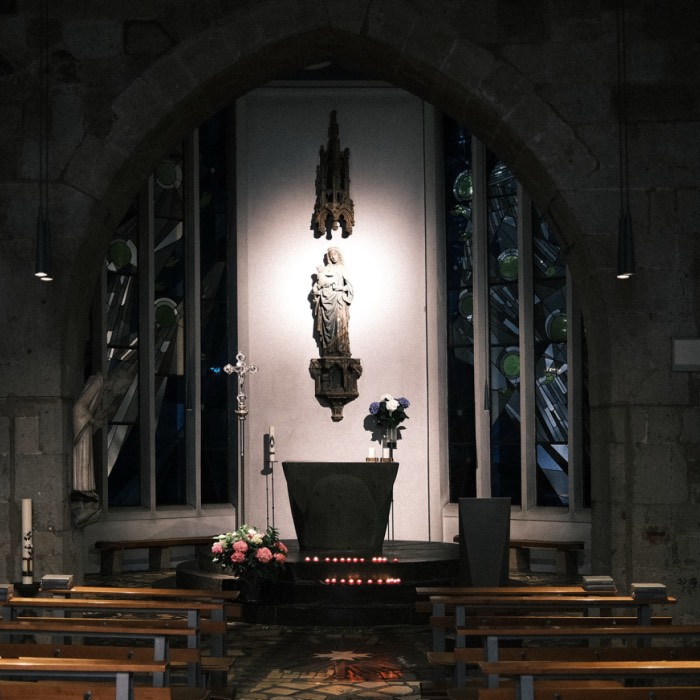
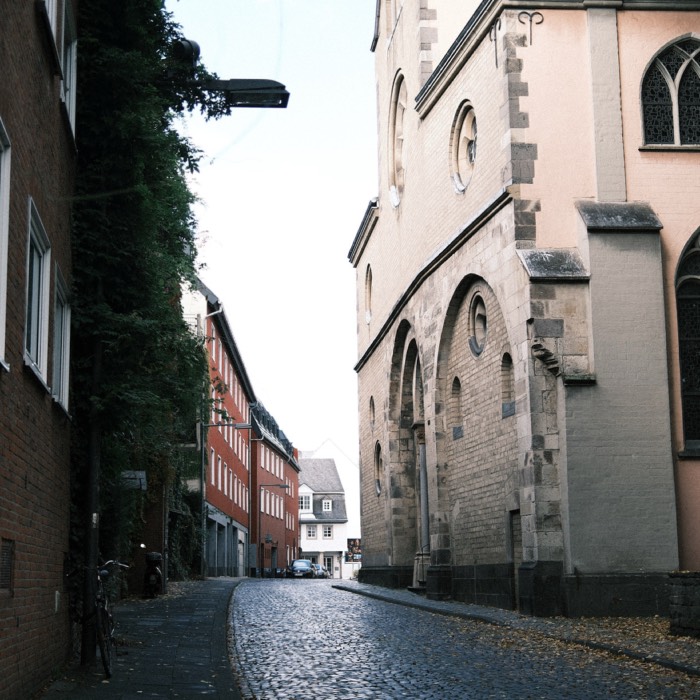
comments